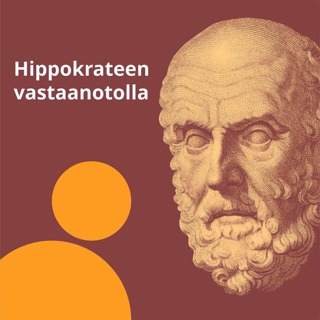
Miami and Tampa: High Risk to Climate Change, Rising Sea Level
Meteorology Matters examines Miami and Tampa's vulnerability to hurricanes and climate change. Miami, despite its booming population and development, faces significant climate risks, including rising sea levels and increased flooding, yet many residents remain, prioritizing lifestyle over potential dangers. Tampa, similarly situated in a low-lying area, presents a high-risk scenario due to its rapid growth and the potential for catastrophic storm surge, with the upcoming Hurricane Milton posing an imminent threat. Both cities highlight the complex interplay between economic growth, environmental risks, and individual choices in the face of climate change. Experts express serious concern about the preparedness of both cities for extreme weather events.
17 Joulu 202422min

Walkable Cities Good for Earth While Americans Prefer Suburbia
Meteorology Matters examines the environmental impact of suburban sprawl, contrasting it with denser, more walkable urban neighborhoods. We explore the trade-offs between walkability, affordability, and living space, highlighting public preference for sprawling suburbs despite their higher carbon footprint. We look at the effects of suburban development on natural habitats, noting both habitat loss and surprising animal adaptations. Finally we examine strategies to reduce the climate footprint of suburban areas, suggesting policy changes, technological upgrades in homes and transportation, and individual actions to mitigate emissions.
16 Joulu 202424min

Hurricane Helene: Impact Erwin Tennessee
Meteorology Matters looks at a Washington Post investigation into the deaths of six Impact Plastics employees during Hurricane Helene's flooding in Erwin, Tennessee. The investigation highlights the role of both the severe weather and allegedly inadequate employer responses in the fatalities, contrasting this with the successful rescue of hospital staff and patients. We also examine the deaths of workers at an Amazon warehouse and a Kentucky candle factory during a tornado. The lack of union representation contributed to the workers' inability to leave their workplaces before the disaster and emphasizes the importance of unions in ensuring worker safety and fair treatment. This boils down to the tragic consequences of prioritizing profit over worker safety in the face of extreme weather events.
3 Joulu 202411min

Lake Effect: 6 Feet of Snow Forecast for Watertown, NY
Meteorology Matters reports on a major Thanksgiving Weekend lake-effect snowstorm impacting upstate New York and parts of the Great Lakes region. Significant snowfall accumulations of up to five or six feet are predicted, especially near Watertown, NY, and along the shores of Lakes Erie and Ontario. Hazardous travel conditions and widespread disruptions are anticipated, prompting warnings and travel restrictions. State and local authorities are mobilizing resources, including the National Guard and transportation crews, to respond to the storm's impact. The storm is expected to last through early Monday.
29 Marras 202411min

Gust vs Sustained Wind: Application to Building Standards
Meteorology Matters presents an analytical framework for standardizing tropical cyclone wind characteristics (mean wind speed, turbulence intensity, integral scale, gust factor, and peak factor) from various measurement conditions to a common reference. This framework uses equilibrium boundary-layer theory and is applied to data from seven tropical cyclones (four typhoons, three hurricanes), comparing results to existing standards (ASCE 7-10 and AIJ-RLB-2004). We continue to. examine gust factor variations based on coastal tower measurements during three landfalling typhoons. We explore the relationships between gust factor and turbulence intensity, height, wind speed, and direction, finding that gust factors are smaller than those in national codes and influenced significantly by shoreline confinement on sea wave development.
29 Marras 202410min

Thanksgiving Week Weather
Meteorology Matters discusses Thanksgiving week weather forecasts across the U.S., predicting potential travel disruptions. CBS News reports on severe storms impacting the Pacific Northwest and California, with ensuing power outages and fatalities, while also forecasting rain and snow in the East impacting Thanksgiving travel. Weather.com provides a more detailed, day-by-day forecast, highlighting potential travel issues due to snow in mountainous regions and lake-effect snow in the Great Lakes area, along with rain and thunderstorms in other parts of the country. The overall message is one of caution and preparedness for holiday travel.
28 Marras 202413min

Deadlines Loom for FEMA Hurricane Disaster Assistance, Unemployment, and Appeals
Meteorology Matters provides details onthe Disaster Unemployment Assistance (DUA) and Federal Emergency Management Agency (FEMA) aid available to Florida residents affected by Hurricanes Helene and Milton. We explain how to apply for FEMA assistance and appeal denials, highlighting challenges faced by applicants. We also focus on DUA application procedures, deadlines, and eligibility requirements for individuals whose employment was impacted by the hurricanes. We go over supplemental information on DUA, including eligibility criteria, application methods, and appeal processes, emphasizing the importance of meeting deadlines and providing necessary documentation. We aim to inform and guide individuals seeking aid after the hurricanes before time runs out!
25 Marras 202416min

What a Second Trump Term Means for Science
People express concern over the potential impact of a second Trump presidency on US science policy. They highlight anxieties regarding potential budget cuts to scientific research, increased focus on research security potentially hindering international collaboration, and a diminished respect for scientific consensus in policy decisions, particularly concerning climate change and public health. The appointment of Robert F. Kennedy Jr. to a key position is cited as a cause for alarm due to his controversial views on public health. Finally, there are discussions of proactive strategies for the scientific community to engage with the new administration and advocate for continued funding and the preservation of independent scientific agencies.
25 Marras 202416min



















